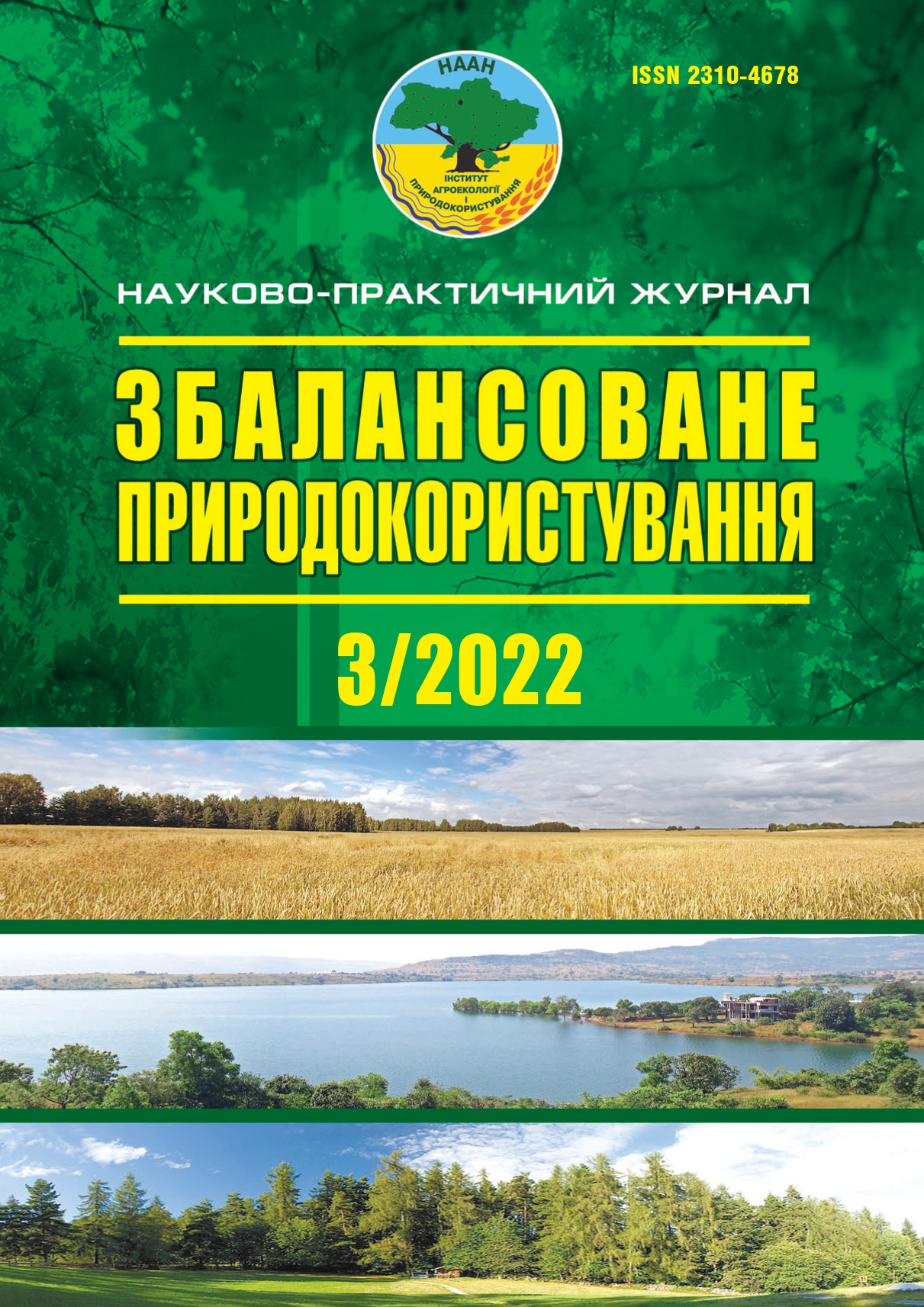The US experience in assessment of soils by productivity
DOI:
https://doi.org/10.33730/2310-4678.3.2022.266554Keywords:
lands, quality, methodological approaches, pointsAbstract
The article has highlighted the experience of the United States in crediting land based on productivity. In Ukraine soil classification was carried out in the section of soil groups according to their main natural properties, which have a stable nature and significantly affect the yield of agricultural crops grown in specific soil and climatic conditions. Complete work on soil grading on agricultural lands in Ukraine was carried out in 1993 within the boundaries of natural-agricultural districts and regions. Integral natural properties of soils reflect the credit score. These properties are divided into basic and modified. The main ones include the following: humus content, capacity of the humus horizon, the content of physical clay (particles up to 0.01 mm). The modified are mainly salinity, erosion, etc. Credit assessment of soil quality is presented in relative values — points on a closed 100-point scale. In contrast to Ukraine, in the United States land credit rating is carried out according to their productivity. Quantitative characterization of land productivity was carried out using two methodological approaches: inductive and deductive. The inductive assessment of productivity is given solely based on the estimated impact of different lands and soil properties on the potential yield. Deductive assessment, on the contrary, is based only on yield data on different soils. Most land valuations combine both approaches. It should be noted that thanks to the improvement of modern computer technology, it became possible to collect and process a large amount of information about land resources, which makes it possible to create mathematical simulation models, search programs, and computerized data banks. This is greatly facilitated by the development of remote sensing, new measuring devices, and map printing systems. This experience will contribute to the improvement of land resource assessment methods in Ukraine as well, despite the serious challenges that exist in the country.
References
Dobriak, D.S., Kanash, O.P., Martyn, A.H. (2009). Systema pokaznykiv bonituvannia gruntiv Ukrainy dlia vykorystannia v ekonomichnii ta hroshovii otsintsi zemel ta zemelnykh dilianok, vyznachennia vtrat silskohospodarskoho vyrobnytstva: naukovyi tvir [The system of indicators of soil grading of Ukraine for use in the economic and monetary evaluation of lands and land plots, determination of agricultural production losses: scientific work]. Certificate of copyright registration for the work No. 27026 of the Ministry of Education and Science dated February 10, 2009 [in Ukrainian].
Rust, R.H., Odell, R.T. (1957). Methods used in evaluating the productivity of some Illinois. Soil Sei. Soc. America. Proc., vol. 21, 2, 171–175 [in English].
Halcrow, H.C., Stucky, H.R. (1949). Procedure for land reclassification in Montana — Bozeman (Montana Agr. Exp. Sta. Bulli, 459) [in English].
Klingebicl, A.A., Montgomery, P.H. (1961). Land capability classification. Washington. 21 p. (USDA / Soil Conserv. Servise. Agriculture Handbook; 210) [in English].
Lindsey, W.A. (1950). A procedure for the equitable assessiment of Nebraska farmland. Linkoln. (Nebraska Arg. Exp. Sta. Bull.; 400) [in English].
Odell, R.T., Oschwald, W.R. (1970). Productivity of Illinois soils. Vrbana (Vniv. Illinois Arg. Exten. Service. Circular; 1016) [in English].
Maio, D.D., Westin, F.C. (1978). Rating South Dakota soils according to productivity. Brooktings. 118 р. (S. D. Agr. Exp. Sta. Bull.; 657) [in English].
Rust, R.H., Hanson, L.D. (1975). Crop equivalent quide for sols of Minnesota. — Madison (Minn. Agr. Exp. Sta. Misc. Rep.; 132) [in English].
Bone, S.W., Norton, L.D. (1981). Ohios soils with yield data and productivity index. Wooster (Ohio state Vniv. Coop. Exten. Servise., 665) [in English].
Berger, K.C., Hole, F.D., Beardsley, J.M. (1952). A soils productivity score card. Soil Sci. Soc. Amerika. Proc., vol. 16, 3, 307–309 [in English].
Fenton, T.E., Duncan, E.R., Shrader, W.D., Dumenil L.C. (1971). Productivity levels of some Iowa soils. Ames. 23 p. (Iowa Agr. and Home Econ. Exp. Sta. and Coop Exten. Service. Spec. Rep.; 66) [in English].
Fenton, T.E. (1975). Use of the soil productivity ratings in evaluating Iowa agricultural land. J. Soil Water Conserv., vol. 30, 5, 237–240 [in English].
Yahner, J., Srinivasan, G. Using the soil surveys for land assenssment: A computer method. Lafayete (Indiana Agr. Exp. Sta. Research Buil., 931) [in English].
Huddleston, J. H. (1982). Agricultural productivity ratings for soil of the Willamette Valley. Corvalis (Oreqon State Univ. Exten. Cireular.; 1105) [in English].
Levee, W.M., Dreqne, H.E. (1951). A method for rating land State College (New Mexico Agr. Exp. Sta. Bull.; 364) [in English].
Pierce, F.G., Larson, W.E., Dowdy, R.A., Graham, W.A. (1983). Productivity of soils: Assessing land — tern changes due to erosion. J. Soil Water Concerv., vol. 38, 1, 39–40 [in English].
Storie, R.E. An index for rating the agricultural value of soils (Cotif. Agr. Exp. Sta. Bull.; 556) [in English].
Foss, G.C., Ostenson, T.K., Patterson, D.D. (1971). The use of soil productivity ratings for assessment equalization among townships in Eddy County. N.O. Farm Res., v. 29, 2, 34–36 [in English].
Downloads
Published
Issue
Section
License
- The authors reserve the right to authorship their work and pass the journal the right to publish this work under a Creative Commons Attribution License license, which allows other persons to freely distribute the published work with the obligatory The authors of the original work and the first publication of this magazine.
- The authors have the right to make independent additional agreements on the nonexclusive dissemination of the work in the form in which it was published by this magazine (for example, to post work in the company's electronic storage or to publish as a monograph) , subject to the first publication of the link to this journal.
- Journal policy allows and encourages the placement of authors on the Internet (for example, in the repositories of institutions or on personal websites) manuscript work as to the presentation of this manuscript to the editorial board and during its editorial processing, as it contributes to The productive scientific discussion and positively affects the efficiency and dynamics of citation published work (see The Effect of Open Access).


